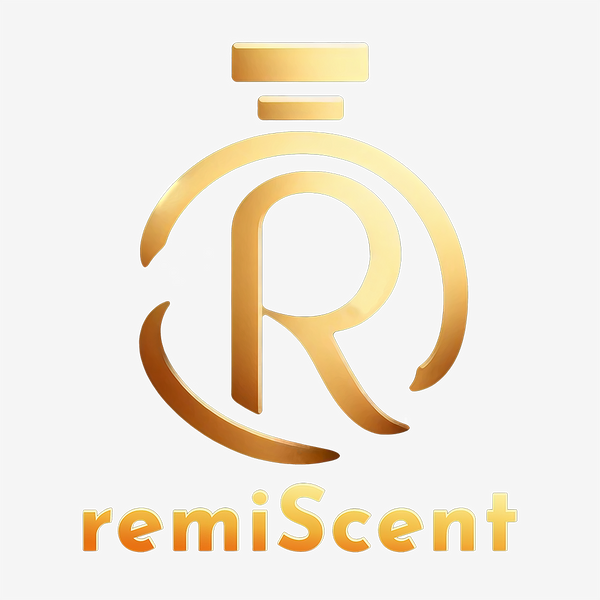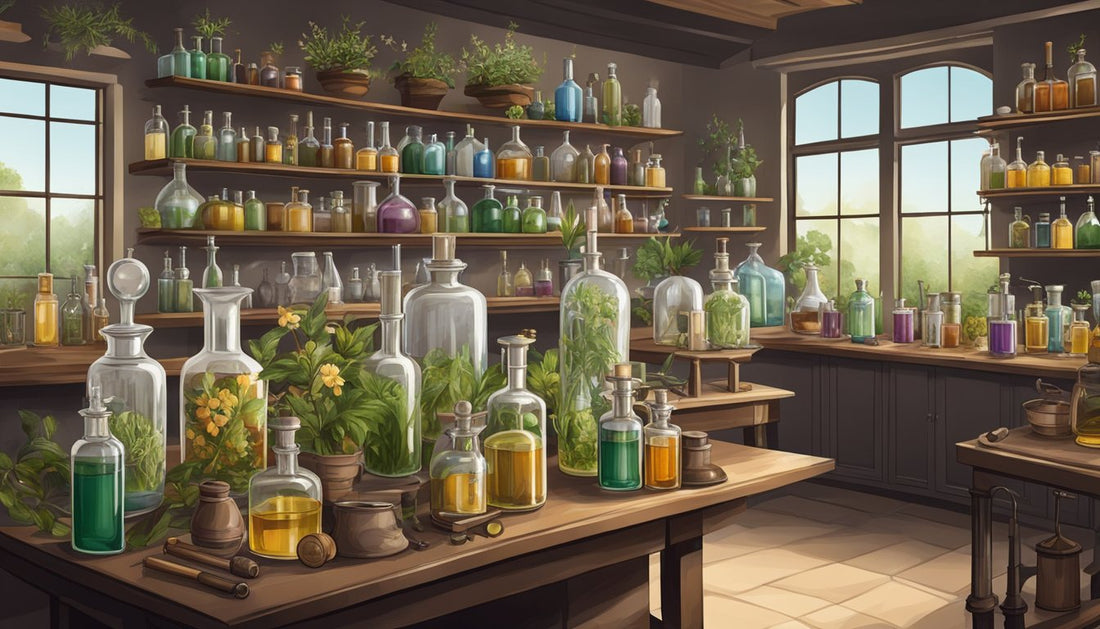Perfume has captivated people for thousands of years. From ancient Egypt to modern Paris, fragrances have played a big role in culture and daily life. The story of perfume is full of interesting twists and turns.

Perfumery started as a sacred art in ancient times and grew into a global industry worth billions today. Early perfumes were made from natural ingredients like flowers, spices, and resins. People used them in religious rituals and to mask bad smells. Over time, new methods let perfumers create more complex scents.
At remiScent, we love exploring perfume's rich history. Each sample in our collection tells a unique story. When you try our fragrances, you're not just smelling nice scents. You're taking part in an art form that spans cultures and centuries. We invite you to discover the magic of perfume through our carefully picked samples.
Key Takeaways
- Perfumery evolved from sacred rituals to a global industry
- Early perfumes used natural ingredients, while modern scents are more complex
- Trying perfume samples lets you explore the art of fragrance
Origins and Cultural Significance

Perfumes have played a vital role in human culture for thousands of years. From ancient civilisations to modern times, scents have shaped religious practices, social customs, and daily life.
Ancient Civilisations' Contributions
The Egyptians were pioneers in perfumery. They used fragrances in religious ceremonies and to embalm their dead. Myrrh and frankincense were prized ingredients. The Greeks and Romans also loved perfumes. They used scented oils for bathing and massage.
In Mesopotamia, perfumes were a sign of wealth and status. The rich wore elaborate scents made from rare ingredients. Common folk used simpler fragrances made from local plants.
Ancient perfumers were skilled craftsmen. They mixed oils, resins, and spices to create unique scents. These early recipes laid the foundation for modern perfumery.
Religious and Social Uses of Scents
Fragrances played a key role in religious rituals across many cultures. In Egypt, priests burned incense to please the gods. The Greeks offered scented sacrifices at their temples.
In daily life, perfumes served practical purposes too. People used them to mask body odours and as medicine. Rose water was a popular remedy for various ailments.
Scents also marked social status. Wealthy Romans doused themselves in expensive perfumes. In contrast, slaves were forbidden from wearing any scents at all.
At remiScent, we're fascinated by these ancient traditions. They remind us that perfumes are more than just pleasant smells. They're a link to our shared human history.
The Evolution of Aromatic Ingredients and Distillation

The journey of perfumery is closely tied to the development of aromatic ingredients and distillation techniques. These advancements have shaped the way we create and enjoy fragrances today.
Natural Ingredients and Early Techniques
In ancient times, people used natural scents from plants, herbs, and spices to make perfumes. They crushed flowers and leaves to release their oils. Resins like myrrh and frankincense were popular for their strong aromas.
Early perfumers also used animal products. Musk from deer and ambergris from whales gave perfumes a rich, deep scent. These natural ingredients were mixed with oils to create fragrances.
Over time, new methods were developed to extract scents. Steam distillation became a key technique. It allowed perfumers to get pure essential oils from plants. This made perfumes stronger and longer-lasting.
Discovery and Development of Alcohol-Based Perfumes
A big change came with the use of alcohol in perfumes. This happened in the 14th century. Alcohol could dissolve oils and hold scents better than other liquids.
The first alcohol-based perfume was Hungary Water. It was made for a queen and became very popular. This new method allowed for more complex fragrances.
Distillation techniques improved over time. This led to purer alcohol and better extraction of plant oils. By the 18th century, Eau de Cologne was created. It used a blend of citrus oils in alcohol and became a hit across Europe.
At remiScent, we're fascinated by this rich history. It's why we offer a wide range of samples, from classic to modern scents. We believe every fragrance tells a story of its time and place.
The Golden Ages of Perfumery

Perfumery has experienced several golden ages throughout history, each marked by significant advancements and cultural influences. These eras saw the art of fragrance-making evolve from simple aromatics to complex, sophisticated scents that we know and love today.
Renaissance Innovations
The Renaissance brought a renewed interest in perfumery, with Catherine de' Medici playing a pivotal role in popularising scents among European nobility. This period saw the birth of new extraction techniques and the creation of more complex fragrances.
At remiScent, we're fascinated by how Renaissance perfumers began experimenting with alcohol as a solvent, leading to longer-lasting scents. This innovation paved the way for the modern perfumes we offer in our sample collection today.
The Renaissance also saw the rise of perfumed gloves, a trend that spread rapidly through royal courts. We love imagining how these scented accessories might have smelled!
The Influence of the East and Islamic Alchemy
Islamic alchemists made significant contributions to the art of perfumery. Al-Kindi, a 9th-century Arab philosopher, wrote extensively on perfume-making techniques.
We're inspired by how Islamic perfumers introduced distillation methods that allowed for the creation of more concentrated and pure essential oils. These techniques are still used in many of the artisanal fragrances we offer at remiScent.
The influence of the East brought new and exotic ingredients to European perfumery. Spices like cinnamon and musk became highly sought after, adding depth and complexity to fragrances.
18th and 19th Century European Sophistication
The 18th and 19th centuries saw perfumery reach new heights of sophistication in Europe. The creation of Eau de Cologne in 1709 marked a significant milestone in fragrance history.
We're particularly fond of this era's focus on luxury and refinement. Perfume became a status symbol, with the nobility commissioning bespoke scents.
The town of Grasse in France emerged as the perfume capital of the world. Many of the niche perfumes we offer at remiScent still source their ingredients from this legendary region.
This period also saw the birth of many perfume houses that are still revered today. We love sharing these historical fragrances with our customers, allowing them to experience a piece of olfactory history.
The Modern Perfumery Industry

The modern perfume industry blends art and science to create captivating scents. It's a world of innovation, creativity, and iconic brands that have shaped our olfactory experiences for decades.
The Chemistry and Creativity of Contemporary Scents
Modern perfumery is a fascinating mix of chemistry and artistry. We've seen incredible advancements in synthetic molecules, allowing perfumers to create scents that were once impossible. These new ingredients give us the freedom to craft unique aromas that push the boundaries of traditional perfumery.
At remiScent, we're passionate about sharing these innovative fragrances with you. Our collection includes niche perfumes that showcase cutting-edge techniques and ingredients. We believe that every spritz tells a story, and these modern creations often have the most intriguing tales to tell.
Perfumers today use high-tech tools to analyse and create scents. Gas chromatography helps identify individual molecules in natural essences, while computer modeling aids in formulating new fragrances. It's a perfect blend of science and creativity that keeps us on our toes!
Iconic Perfumes and Brands
The 20th century saw the rise of legendary perfume houses that still dominate the industry today. Brands like Chanel, Dior, and Guerlain have created timeless fragrances that continue to captivate us.
Chanel No. 5, launched in 1921, revolutionised perfumery with its bold use of aldehydes. It remains an icon to this day. Guerlain's Shalimar, introduced in 1925, brought the Oriental fragrance family to the forefront of perfumery.
We at remiScent offer samples of these classics alongside modern interpretations. It's fascinating to compare the original formulations with their contemporary counterparts. You can trace the evolution of perfumery right from your own dressing table!
These iconic scents have shaped the industry and continue to inspire new creations. They're more than just perfumes – they're a part of our cultural heritage.
Frequently Asked Questions

Perfumery has a rich and fascinating history dating back thousands of years. From ancient Egyptian rituals to modern scientific techniques, the art of creating fragrances has evolved significantly over time.
How did the practice of perfume-making originate in ancient times?
Perfume-making began in ancient Egypt, where fragrant oils and resins were used in religious ceremonies and for personal adornment. The Egyptians developed methods to extract scents from plants and flowers, creating some of the first perfumes.
Ancient Mesopotamians and Greeks also played important roles in early perfumery. They used aromatic plants and spices in rituals and medicine, laying the groundwork for future developments.
Could you trace the evolution of perfumery from its ancient origins to its modern-day form?
Perfumery has come a long way since its ancient beginnings. In the Middle Ages, perfumes were primarily made from natural ingredients like herbs and flowers.
The Renaissance saw a boom in perfume production, especially in Italy and France. New techniques were developed to extract and preserve scents.
The 19th century brought major changes with the rise of synthetic fragrances. This allowed for more complex and stable scents, revolutionising the industry.
Today, perfumery combines traditional methods with cutting-edge technology. We use both natural and synthetic ingredients to create an incredible range of fragrances.
Who is considered the father of contemporary perfume creation and what is their contribution?
François Coty is often called the father of modern perfumery. In the early 20th century, he revolutionised the industry by combining natural and synthetic scents.
Coty created perfumes that were more complex and longer-lasting than ever before. He also made perfume more accessible to the general public through clever marketing and affordable prices.
What are some significant milestones in the history of perfume, particularly through different cultures?
Ancient Egypt: The use of perfumes in religious rituals and daily life.
Ancient Greece and Rome: The development of new extraction techniques and the use of perfumes in public baths.
Medieval Arabia: The invention of alcohol-based perfumes and the discovery of new fragrant materials.
Renaissance Italy: The creation of the first guilds for perfumers and the rise of Venice as a perfume-making centre.
17th century France: The establishment of Grasse as the perfume capital of the world.
19th century: The creation of the first synthetic fragrances, opening up new possibilities for perfumers.
In what way did the perfumery techniques differ between ancient civilisations and modern procedures?
Ancient civilisations relied on natural ingredients and simple extraction methods. They used techniques like enfleurage to capture scents from flowers and plants.
Modern perfumery uses a mix of natural and synthetic ingredients. We employ advanced techniques like steam distillation and CO2 extraction to create more complex and stable fragrances.
Today's perfumers also have access to a much wider range of ingredients. This allows for greater creativity and the ability to create scents that were impossible in ancient times.
At remiScent, we celebrate this rich history of perfumery. We offer samples of both classic and modern fragrances, allowing you to experience the evolution of scent for yourself.

